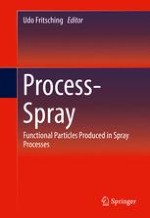2016 | OriginalPaper | Chapter
24. Analysis of Mechanisms for PVP-Active-Agent Formulation as in Supercritical Antisolvent Spray Process
Authors : Matthias Rossmann, Daniel Bassing, Iolanda De Marco, Valentina Prosapio, Ernesto Reverchon, Eberhard Schlücker, Andreas Braeuer
Published in: Process-Spray
Publisher: Springer International Publishing
Activate our intelligent search to find suitable subject content or patents.
Select sections of text to find matching patents with Artificial Intelligence. powered by
Select sections of text to find additional relevant content using AI-assisted search. powered by
